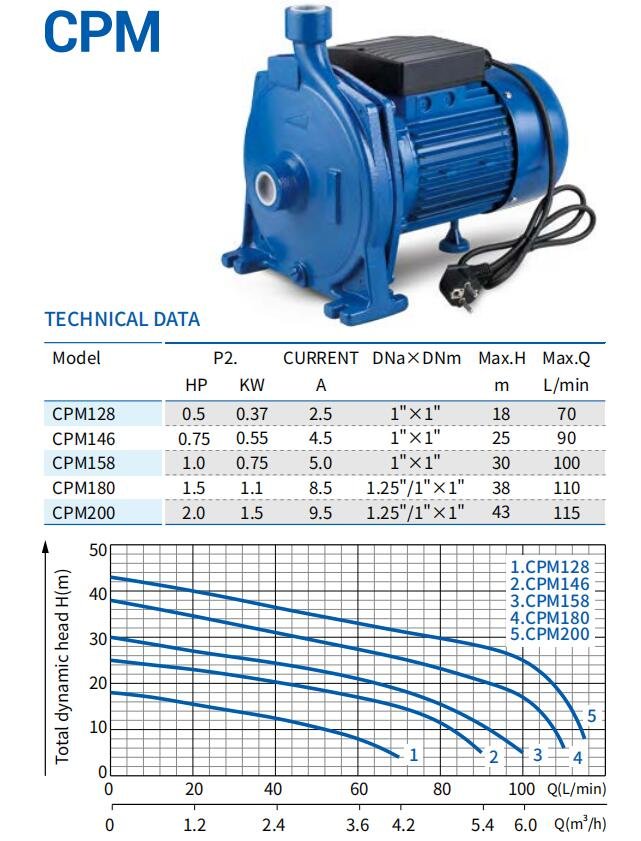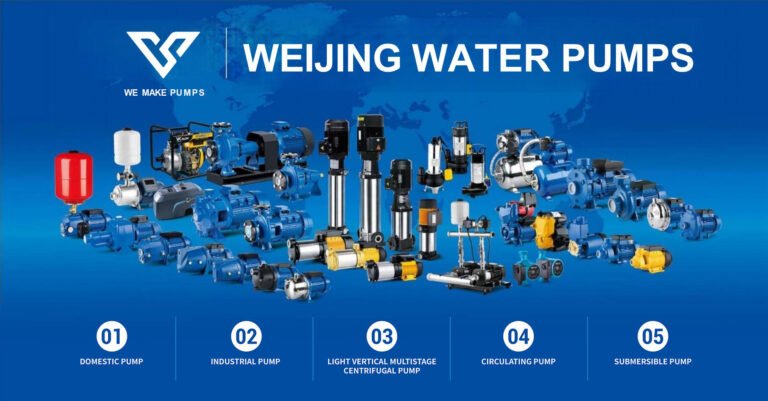Parameters of Water Pump That Reflect the Main Performance pump

Parameters of Water Pump That Reflect the Main Performance Pump
A water Performance Pump is an essential component in various applications, from residential plumbing systems to industrial processes. The performance of a water pump can be evaluated based on several key parameters:
1. Flow Rate (q) – Performance Pump
The flow rate of a water pump refers to the volume of water that it can move in a given amount of time. It is typically measured in gallons per minute (GPM) or liters per second (L/s). The flow rate is an important parameter as it determines how quickly the pump can deliver water to its intended destination.
Above flow rate is the amount of liquid (volume or mass) delivered by the pump in a unit of time.
The flow rate is represented by , and the units are: m3/s;
2. Head (h)-Performance Pump
Head, also known as “head of water,” is the energy increment of the unit weight of liquid pumped from the pump inlet to the outlet. It is usually represented by , and the unit is meters (m).
In general, the head of a horizontal centrifugal pump is divided by the pump shaft centerline. On one side of the axis is the suction pipe, which draws water up, and on the other side of the axis, water is pumped out through the discharge pipe. The height at which the water pump draws water is called the suction head, abbreviated as , represented by ;
3. Speed (n)
The speed is the rotational speed of the pump shaft per unit time, represented by the symbol , and the unit is revolutions per minute (r/min). Generally, pumps with smaller diameters have higher speeds, while its with larger diameters have lower speeds.
4. Power (Pa)
The power of a water pump represents the amount of energy it consumes or delivers. It is measured in units such as watts (W) or horsepower (HP). The power requirement of a pump depends on the desired flow rate, head, and efficiency.
Mentioned power of the pump usually refers to the input power, that is, the power transmitted from the prime mover to the pump shaft, also known as the shaft power, represented by .
The shaft power of the pump should be determined by measuring the speed and torque, or by measuring the input power of the known efficiency of the motor (prime mover) directly connected to the pump. The shaft power of the pump is:
The effective power of the pump, also known as the output power, is represented by . It is the effective energy obtained from the liquid pumped out of the pump in the unit time.
Since the head is the effective energy obtained from the unit weight of liquid output by the pump, the product of the head, the mass flow rate, and the acceleration due to gravity is the effective energy obtained from the liquid output from the pump in the unit time — the effective power of the pump.
Pu=γQH/1000=ρgQH
Where if the unit weight of the liquid is :
5. Efficiency (η)
For to measure the effectiveness of the pump’s power transmission, the ratio of the effective power of the pump to the shaft power.
Efficiency is an important technical and economic indicator of the pump, represented by the symbol .
Because the pump has various losses such as mechanical, volumetric, and hydraulic losses. the effective power of the pump is always smaller than the shaft power. Therefore, the smaller the power loss inside the pump, the higher the efficiency of the pump; conversely, the larger the power loss inside the pump, the lower the efficiency of the pump.
The formula for calculating efficiency is η=.
Ha, any more the Parameters of Water Pump if you want to know for your projects, kindly contact us for more water pumps details.
We specialize in manufacturing a wide range of surface pumps, including centrifugal water pumps, peripheral water pumps, and self-priming pumps. Our product line also includes cast iron castings, spare parts, and customized components.
Our range of products includes:
- Peripheral pumps
- Centrifugal pumps
- JET self-priming pumps
- Self-suction pumps
SERVICES:
- Customized design according to samples, drawings, and performance requirements.
- With over 20 years of skilled experience, we offer OEM exporting services tailored to your needs.
Our Product Range:
We serve various industries both domestically and internationally. Our water pumps types include:
- Standard centrifugal pumps
- Multistage pumps
- Immersed pumps
- Process overhung solid handling pumps
In addition, we manufacture for water pump and accessory such as peristaltic, progressing cavity, screw, and gear pumps. This enables us to provide multiple solutions for your processes and accommodate almost any fluid.








